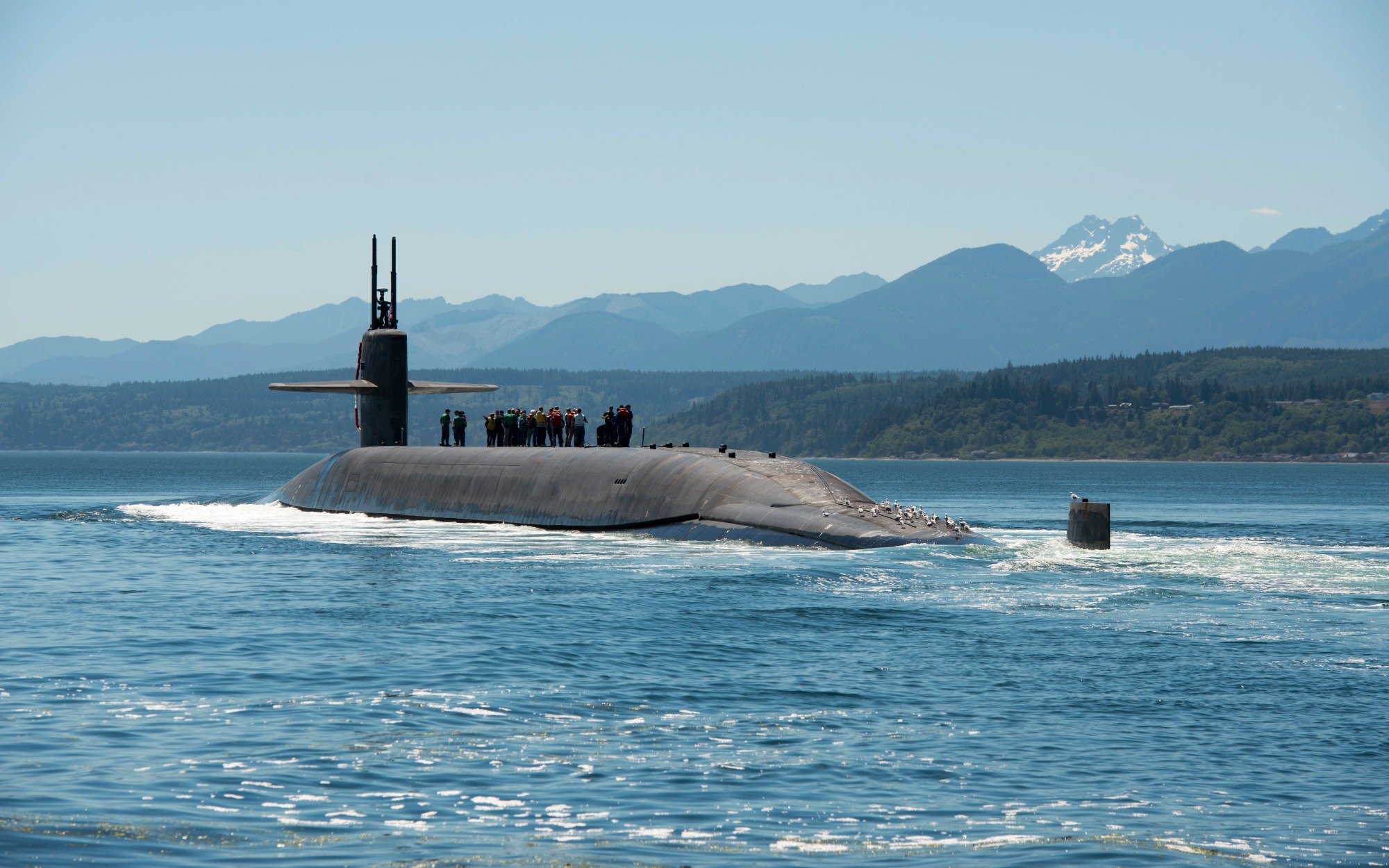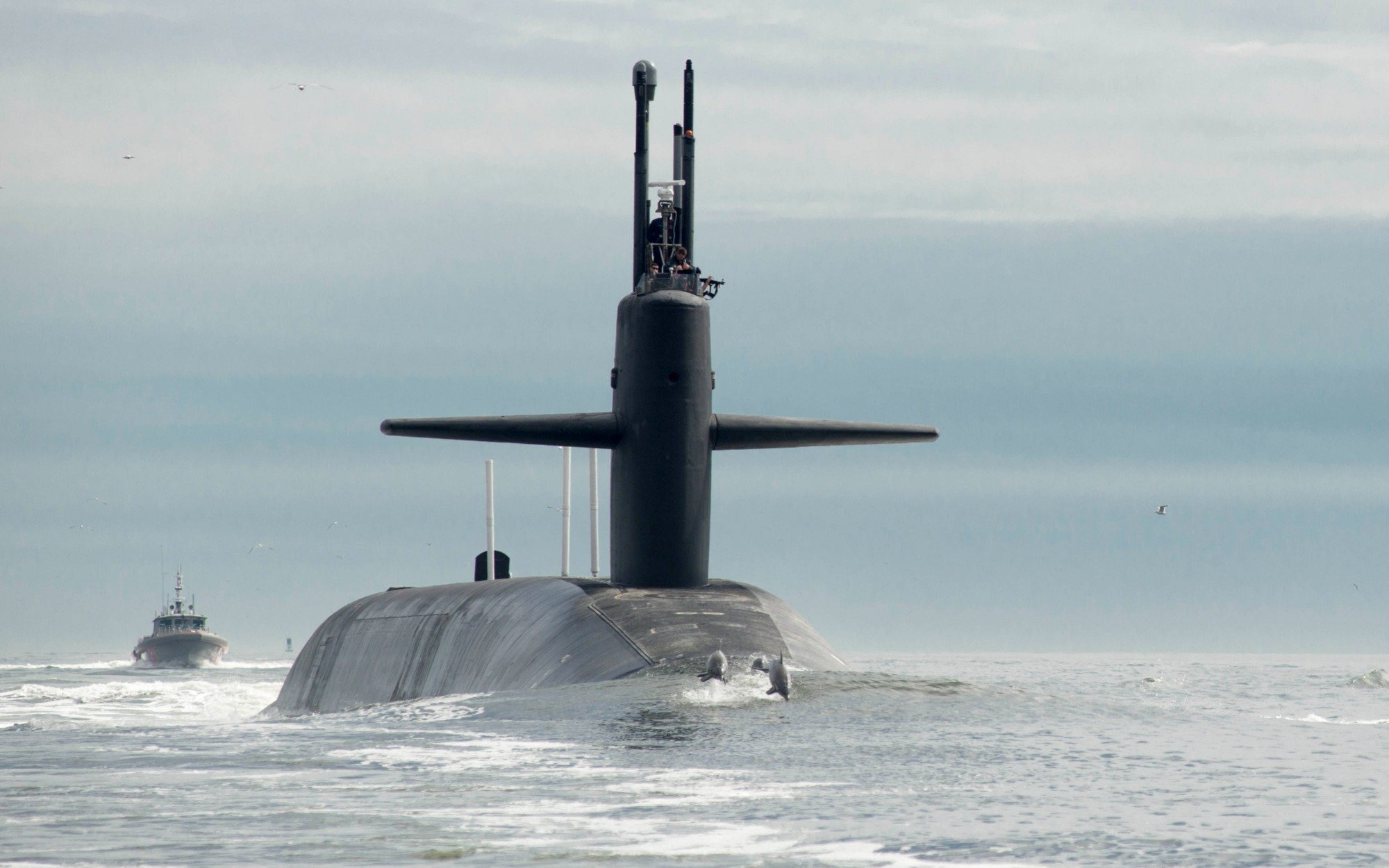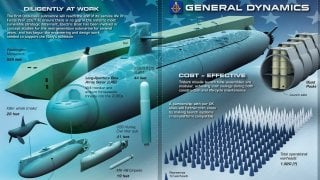'Country Killer': Columbia-Class Missile Sub Will Be Armed with over 100 Nuclear Warheads
The US Navy is set to replace its aging Ohio-class ballistic missile submarines (SSBNs) with the advanced Columbia-class submarines, each costing around $9 billion. These submarines are a critical component of the United States' nuclear triad, which includes land-based ICBMs, air-launched weapons, and sea-based SSBNs.
What You Need to Know: The US Navy is set to replace its aging Ohio-class ballistic missile submarines (SSBNs) with the advanced Columbia-class submarines, each costing around $9 billion. These submarines are a critical component of the United States' nuclear triad, which includes land-based ICBMs, air-launched weapons, and sea-based SSBNs.

-Each Columbia-class submarine will carry 16 Trident II D5 missiles, capable of delivering multiple nuclear warheads, providing a formidable second-strike capability. However, delays in the Columbia-class program could impact the effectiveness of the nuclear deterrent strategy, as the Navy plans a one-to-one replacement with the retiring Ohio-class vessels.
-Ensuring the timely deployment of the Columbia-class is vital for maintaining global nuclear stability.
US Navy's Columbia-Class: The $9 Billion Submarine Loaded with Firepower
The US Navy is set to replace the aging Ohio-class ballistic missile submarine (SSBN) with the forthcoming Columbia-class, a nine billion dollar per unit, cutting-edge machine loaded with remarkable firepower.
The Columbia will, “have sixteen submarine-launched ballistic missiles (SLBM) launch tubes, housed in four Common Missile Compartment (CMC) “Quad-Packs.” Each SLBM launch tube could be armed with a Trident II D5 Missile. Each trident D5 missile will carry eight Thermonuclear Multiple Independently Targetable re-entry Vehicles (MIRVs) but could hold up to twelve MIRV Warheads.”
In short, each Columbia-class will have enough firepower onboard to effectively destroy any city on Earth. The Navy plans to build twelve of these city-destroying vessels.
Nuclear Deterrence
The SSBN holds a special position in American foreign policy, as one of the three pillars in the nuclear deterrence strategy known as the nuclear triad. The nuclear triad includes land, air, and sea nuclear deployment options.
The land based option consists of the Intercontinental Ballistic Missile, of which the U.S. has about 400. The air based option consists of the heavy bomber, like the B-52 and the B-2, the latter of which will soon to be replaced with the B-21.
And the sea based option consists of the SSBN. In the aggregate, the US has a multi-layered and flexible nuclear deployment strategy, which at heart is a nuclear deterrent strategy.
The SSBN is a vital part of the nuclear triad, armed with submarine-launched ballistic missiles (SLBMs), which are large, long-range missiles armed with multiple nuclear warheads. Basically, the purpose of the SSBN is to lurk beneath the sea, with their SLBMs ready, “so as to deter a nuclear attack on the United States by another country by demonstrating to other countries that the United States has an assured second-strike capability.”

For a generation, the U.S has relied upon the Ohio-class to patrol the world’s oceans, loaded with nuclear weapons. Soon, the Columbia-class will inherit the role. And the Columbia is plenty-armed to offer a second-strike capability.
Each Columbia will be able to carry sixteen Trident D5 SLBMs. The Trident costs nearly thirty-one million dollars per unit and can carry multiple warheads.
So, the Columbia should be able to carry 128 W88 thermonuclear warheads, each of has a 475 kiloton yield, “which is enough firepower to potentially destroy any major city and most of the surrounding area in a seven mile radius.”
Nuclear Deterrence On Hold
The Columbia is the U.S Navy’s number one procurement priority, as the nation’s nuclear triad is dependent upon the new submarine’s successfully replacing the Ohio. Yet, as multi-billion dollar weapons programs often are, the Columbia is delayed. The delay could cause complications for the nuclear triad, which depends upon an SSBN, and it’s dozens of thermonuclear warheads, to deter nuclear attack.
The Columbia is expected to replace the Ohio at a one-to-one basis, meaning, for every Columbia that rolls off the production line, one Ohio will be retired, so as to preserve SSBN force numbers as is.

About the Author: Harrison Kass
Harrison Kass is a defense and national security writer with over 1,000 total pieces on issues involving global affairs. An attorney, pilot, guitarist, and minor pro hockey player, Harrison joined the US Air Force as a Pilot Trainee but was medically discharged. Harrison holds a BA from Lake Forest College, a JD from the University of Oregon, and an MA from New York University. Harrison listens to Dokken.
Image Credit: Creative Commons and/or Shutterstock.


